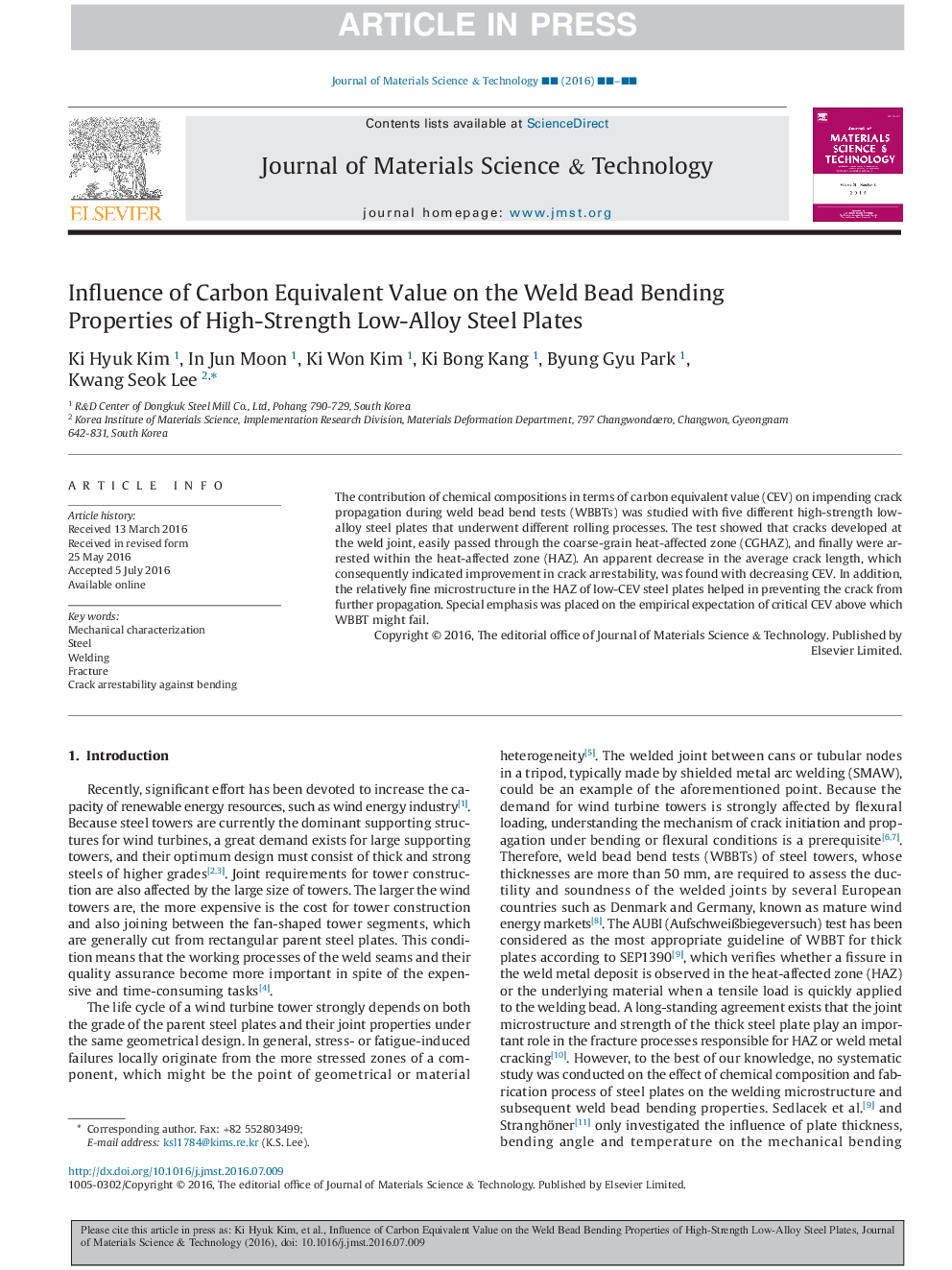| Article ID | Journal | Published Year | Pages | File Type |
|---|---|---|---|---|
| 5451647 | Journal of Materials Science & Technology | 2017 | 9 Pages |
Abstract
The contribution of chemical compositions in terms of carbon equivalent value (CEV) on impending crack propagation during weld bead bend tests (WBBTs) was studied with five different high-strength low-alloy steel plates that underwent different rolling processes. The test showed that cracks developed at the weld joint, easily passed through the coarse-grain heat-affected zone (CGHAZ), and finally were arrested within the heat-affected zone (HAZ). An apparent decrease in the average crack length, which consequently indicated improvement in crack arrestability, was found with decreasing CEV. In addition, the relatively fine microstructure in the HAZ of low-CEV steel plates helped in preventing the crack from further propagation. Special emphasis was placed on the empirical expectation of critical CEV above which WBBT might fail.
Related Topics
Physical Sciences and Engineering
Materials Science
Materials Chemistry
Authors
Ki Hyuk Kim, In Jun Moon, Ki Won Kim, Ki Bong Kang, Byung Gyu Park, Kwang Seok Lee,
